Automotive-fabric – EU-chemicals 31-10-2022 - Arhive
Automotive-fabric – EU-chemicals
-PET- Bottle rPET – Petrochemicals
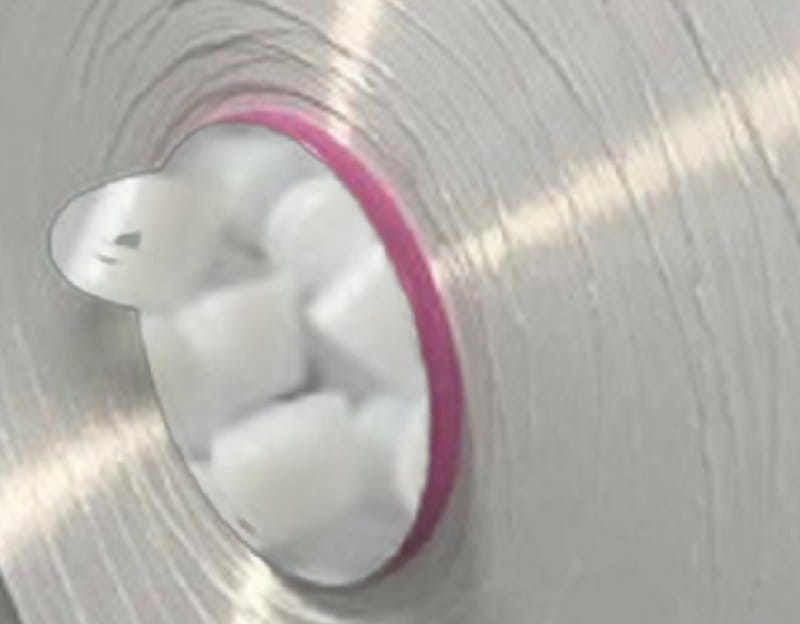
Crude Oil Prices Trend

Crude Oil Prices Trend Polyestertime
-US Chemours to idle TiO2 capacity amid Europe, China slowdown
Chemours plans to idle a portion of its titanium dioxide (TiO2) capacity by an unspecified amount as demand for the white pigment remains weak in Europe and China, the CEO of the US-based producer said on Wednesday.
“We are going through a bit of an adjustment on TT,” said Mark Newman, Chemours CEO, who referred to the company’s Titanium Technologies business by its initials, TT. Newman made his comments during an earnings conference call.
Demand for TiO2 has fallen significantly and quickly, particularly in Europe and China, he said. Automotive-fabric – EU-chemicals
“We want to do the right thing long term for the business by adjusting production schedules against demand,” he said. “We will have a couple of rough quarters as we adjust production schedules.”
Chemours did not disclose the magnitude of any capacity reductions, in keeping with company policy.
However, Newman did say that Chemours can temporarily idle single lines at its TiO2 plants.
The company’s plants are quite large when compared with its competitors, he said. “So when we idle a line, that could be the equivalent of a competitor idling a plant.
When Chemours does idle a line, Newman said the company is skilled at finding ways to cut cost. When demand recovers, the line can resume operations very quickly, he said
Chemours expects the decline in TiO2 demand to bottom out in the next couple of quarters, likely in the first quarter of 2023, he said.
Long term, the company wants its TiO2 business to reach 25% margins over time, Newman said.
Another step being taken by the business is to work through some of its higher cost inventory that it bought earlier in the year, he said.
At the end of the year, the company will bring down its own inventories of finished goods for cash purposes, Newman said.
Such steps are typical of companies.
TIO2 DEMAND PERSISTS IN WESTERN HEMISPHERE
The outlook for TiO2 is different in North America and Latin America, where volumes and demand continue to do well, Newman said.
Chemours’s TiO2 sales and production have greater exposure to North America than many of its competitors, he said. That exposure allows Chemours to benefit from the region’s relatively stronger demand for TiO2 and from its lower energy costs.
Chemours relies solely on the chlorine-based route to produce TiO2, and chlorine production consumes a lot of energy. Automotive-fabric – EU-chemicals
In North America, TiO2 inventory levels are in line with where end customers want them, Newman said. As the market prepares for the start of the coatings season in spring 2023, there could be some inventory building.
TiO2 is a white pigment that makes paints opaque. Other chemicals used to make paints and coatings include solvents such as butyl acetate (butac), butyl acrylate (butyl-A), ethyl acetate (etac), glycol ethers, methyl ethyl ketone (MEK) and isopropanol (IPA).
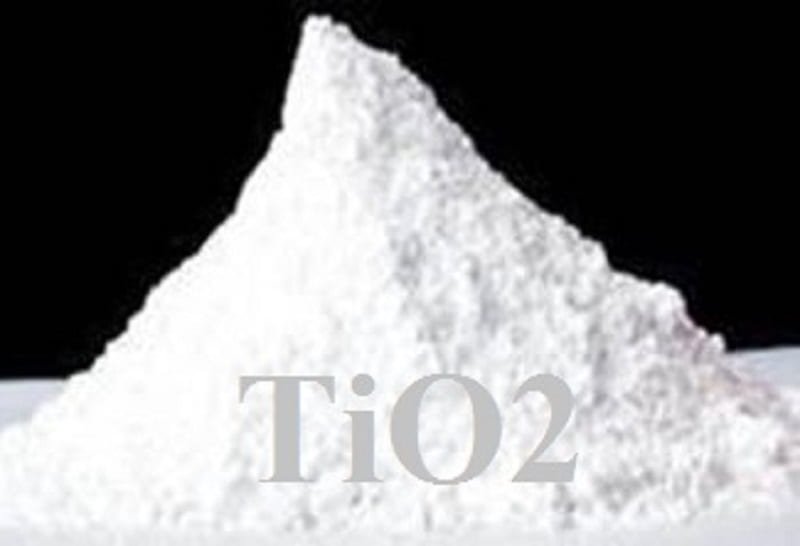
-EU chemical industry “reaching breaking point”
Cefic: Energy crisis at ‘an unsustainable level’ as Europe reports first ever chemical balance deficit
Brussels – For the ‘first time ever’, Europe has imported more chemicals than it exported, both in volume and value, resulting in a trade deficit of €5.6 billion for the first half of 2022.
In a statement 20 Oct, the European Chemical Industry Council (Cefic), said the deficit was due to the ongoing energy crisis in the region, which had “reached an unsustainable level for the European chemical industry”. Automotive-fabric – EU-chemicals
The crisis, Cefic said, is also impacting the competitiveness of the industry, which is one of the most energy intensive in Europe.
The sector, it said, has to compete on the global market with players from regions with more favourable energy prices.
“We are approaching the point of no-return,” said Marco Mensink, Cefic director general.
“If no emergency solution to the energy prices is provided to our sector, we are not far off the breaking point,” he added.
According to the Cefic leader, “hundreds” of businesses in the chemical sector are now in survival mode and the industry has started seeing “first closures”.
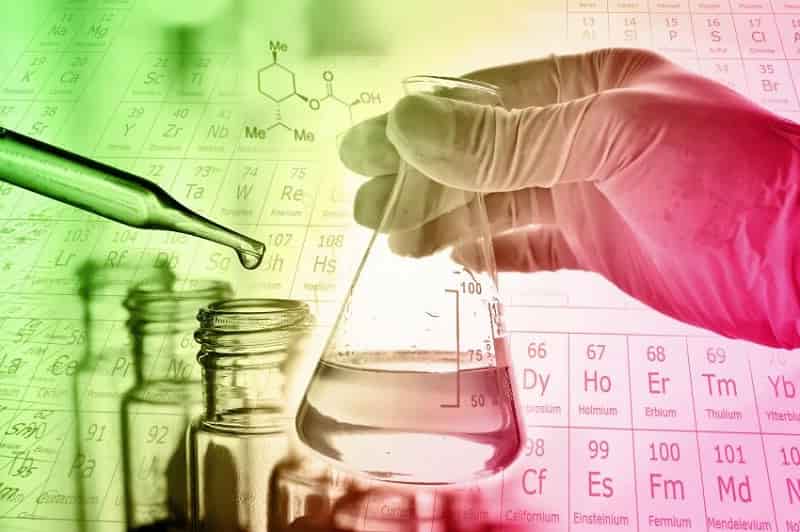
-Nextension Technology a Step Change for Performance Polyolefins
Odor-free automotive, mono-material packaging, and medical applications are among the target markets.
Borealis announced at K 2022 the launch of its proprietary Borstar Nextension technology, a step change for polypropylene (PP) performance. The combination of Borstar and the proprietary Borstar Nextension catalysts reportedly produces a wider range of tailored polyolefins than were previously available. In multilayer packaging applications, this technology enables the replacement of multiple materials with only one material, thus enabling easier recycling and encouraging design with recycling in mind.
The Borstar Nextension technology yields synergistic effects resulting from the combination of Borstar performance based on multi-modality and the controlled incorporation of the co-monomer — in this case, higher α-olefins — and the novel, single-site Borstar Nextension catalysts. The technology is a step change for PP performance because it broadens the range of properties thanks to the ability to tailor polymers for improved purity, transparency, and optics after sterilization, as well as superior sealing and bonding at lower temperatures.
This universal solution enables material substitution in multilayer, multi-material applications in a range of industries, including automotive, flexible packaging, and healthcare, as well as many molding processes. Initial product introductions for selected consumer packaging offer unbeatable transparency for film applications, said the company. In mobility, the Borstar Nextension technology will enable purity levels beyond today’s automotive industry requirements with reduced odor and volatiles in interior and exterior applications. Automotive-fabric – EU-chemicals
The Borstar Nextension technology drives plastics circularity. Its performance properties enable the use of only one material instead of many in multilayer applications. In a large number of applications, these circular packaging designs may include non-virgin grades, like those from the Bornewables portfolio of circular polyolefins manufactured with second-generation renewable feedstock, or from the transformative Borcycle portfolios containing grades made of polyolefin-based post-consumer recyclate.
The mono-material solutions enabled by this technology are easier to sort and recycle at the end of their first life cycle. Crucially, the high-performance mono-material applications produced using this technology encourage design for recycling. In sum, according to Borealis, using Borstar Nextension technology in the production of PP helps close the loop on plastics circularity while pushing performance boundaries.
“Our Borstar Nextension Technology opens exciting new horizons for PP by uniting outstanding performance characteristics with enhanced circularity,” says Lucrèce Foufopoulos, Executive Vice President, Polyolefins, Circular Economy and Innovation & Technology.
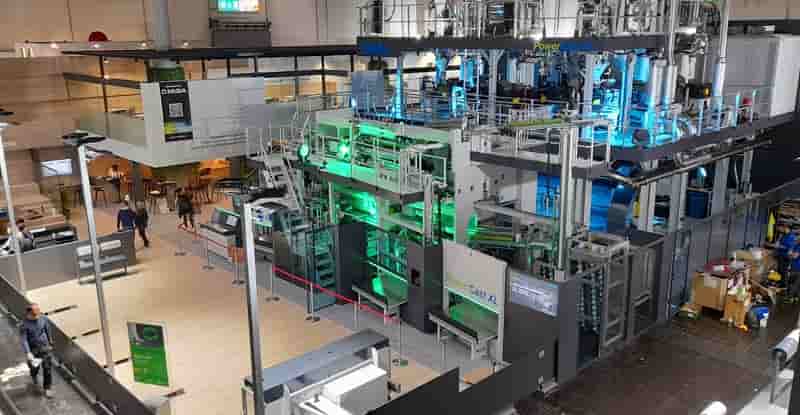
-Lear Corp. launching automotive interior fabric made from recycled plastic bottles
Called ReNewKnit, the suede-like material will be produced at company facilities in the U.K. and Poland.
Automotive seating and e-systems producer Lear Corp., Southfield, Michigan, has announced a fully recyclable sueded material it says is expected to launch in seating and door panel applications with a global automaker in 2024.
Lear says the new material, called ReNewKnit, is a first-to-market automotive textile that is fully recyclable at its end of life, manufactured with recycled materials at the company’s facilities in the U.K. and Poland using 100 percent renewable electricity.
The company says the material, developed by Guilford Performance Textiles by Lear, is composed of 100 percent recycled plastic bottles.
ReNewKnit fibers are spun from polyester yarn and finished with a foam-free recycled fleece backing that further reduces water and energy consumption during the manufacturing process. Automotive-fabric – EU-chemicals
Lear says the material “challenges perceptions of reused and recycled textiles with a wide range of surfaces suitable for various interior applications and improved functionality”.
“At Lear, we are positioning our surface material offerings to what we believe is the future—a global circular economy where repurposed textiles can be infinitely recycled to become the ultimate raw material for sustainable manufacturing and design,” says Frank Orsini, executive vice president and president of Lear’s seating business.
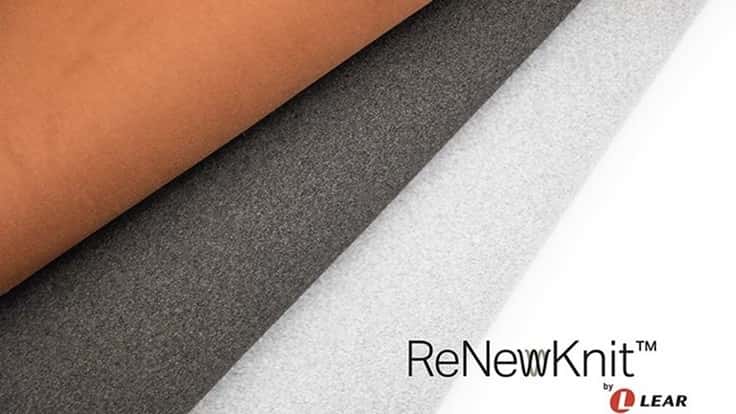
-Revolution develops certified PCR stretch film
The company’s EncoreWrap stretch film is made with 10 percent postconsumer recycled resin.
Revolution, a manufacturer of recycled resins and recycled-content plastic products based in Little Rock, Arkansas, has developed EncoreWrap as a high-performance hand stretch film made with 10 percent postconsumer recycled (PCR) resin. Revolution collects stretch film scrap from distributor clients to support the production of its PCR resin that is used in EncoreWrap.
EncoreWrap contains Revolution’s proprietary, third-party certified Encore PCR, which the company says produces a higher quality of clarity and strength than traditionally observed in plastic stretch wrap film that contains PCR. Revolution says EncoreWrap can be used as a sustainable solution for the warehousing, transportation and commercial industries as a way to reduce their environmental impact and reach sustainability goals.
The Encore Wrap material features a light blue tint in roll form that retains high clarity when applied to a pallet. Revolution says its upgraded, multilayered plastic stretch film is stiff cast with a quiet release and provides strength with resins designed to provide maximum load holding force and high puncture resistance.
According to Revolution, EncoreWrap has received certification from Scientific Certification Systems Inc. Global Services. Automotive-fabric – EU-chemicals
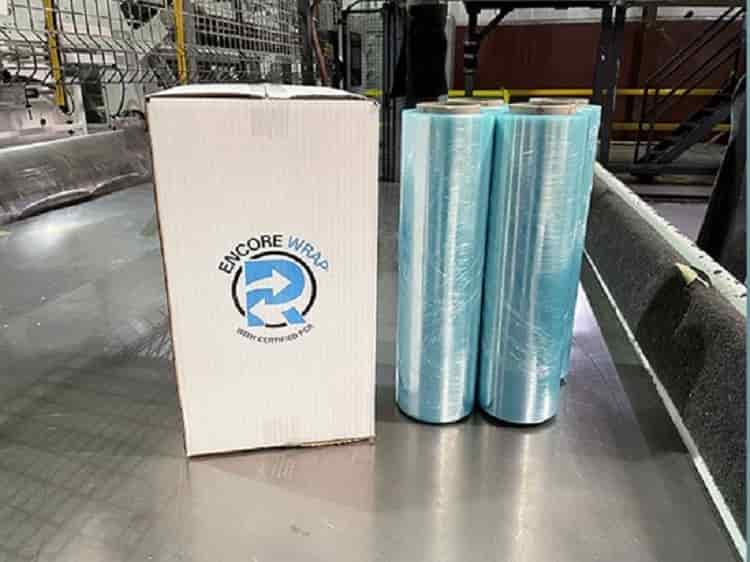
-Rieter presents latest innovations at India ITME 2022, strengthens success of spinning mills
Rieter is presenting the latest innovations in its systems, components and services at the upcoming India ITME 2022 in Uttar Pradesh (India), taking place from December 8 – 13, 2022. The company’s technology portfolio is designed to help customers succeed in markets shaped by rising energy and raw material costs.
The automatic winding machine Autoconer X6 perfectly completes the Rieter ring and compact-spinning systems. The machine serves as the final quality assurance in the ring and compact-spinning process and is key to the performance of the subsequent process stages. The Multilink system with Multilot offers maximum flexibility to handle a different type of yarn.
The latest splicer generation OZ1 and OZ2 provides an optimum splice quality based on an open prism. With only two prisms spinning mills can splice the entire spectrum of cotton yarns as well as blends. They are also used for the splicing of cotton-based elastic core yarns in combination with the Elastosplicer. The splice zone exhibits an impressive elasticity in the fabric.
The Rieter compacting devices – COMPACTapron, COMPACTeasy and COMPACTdrum – are the right solution for every application. Spinning mills can change quickly between ring and compact yarn and offer customers a broader product range. This gives them an edge in the market.
Rieter offers solutions for the integration of recycled raw material into yarn production to help close the textile loop and make fashion more circular. Both rotor and ring yarns can be produced with a considerable amount of mechanically recycled fibers. The result is promising: Garments made of challenging post-consumer material can be attractive for both consumers and the environment.
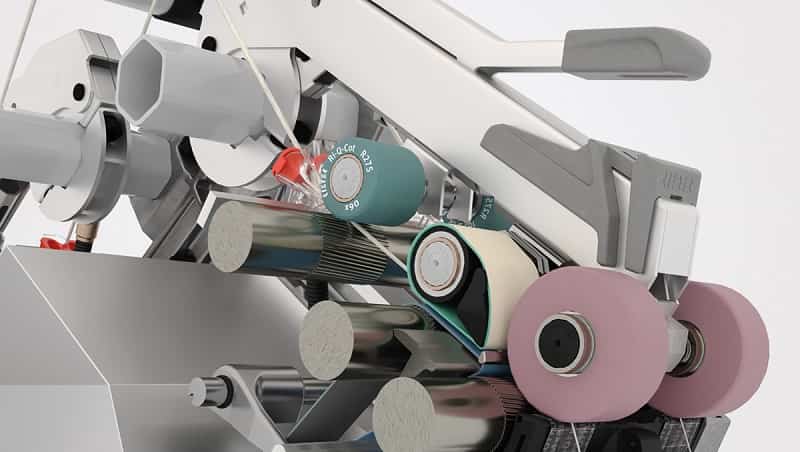
-These factors must be solved before our plastic can become circular
In order to achieve our sustainability goals, we need to address the issues that prevent plastic from becoming circular.
Better sorting, more chemical recycling, and the establishment of a downstream industry are some of the most important factors.
Every year, close to 350 million tonnes of plastic are produced worldwide, and the amount is growing. Only about seven percent of this plastic is recycled. In order to deal with this significant challenge, we must quickly be able to increase the recycling of the plastic resources we have at hand.
One of our main challenges is that a significant proportion of the waste plastic still cannot go to material recycling. There are various reasons for this, but the following factors will be important if we want to develop an effective circularity that includes as much of our waste plastic as possible.
More knowledge about the recycling of plastics
It is a fact that in 2022 there is limited knowledge about waste plastic, both in society and in the waste industry. This applies to large parts of the value chain, from the collection, sorting, and cleaning of waste plastic to the development of raw materials such as granules, and the final production of new plastic products.
More knowledge about plastic qualities is important to ensure that larger volumes of the “right” plastic are used for material recycling, whether the plastic goes to mechanical or chemical processing. A greater understanding of the value of plastic in a circular economy can also increase its reuse and at the same time reduce the amount of plastic that ends up in nature.
More downstream solutions and processing capacity
It is of little help to talk about plastic recycling if we do not have enough businesses that can carry out the task. Most countries in Europe lack sufficient downstream solutions for processing and facilitating the recycling of plastics. We need to build a European industry around plastic processing and recycling to ensure the reuse of the ever-growing quantities of plastic we produce today.
The establishment of chemical recycling
Today, mechanical recycling of hard plastics constitutes the most widespread material recycling of plastic worldwide. But in order to speed up the recycling of plastics, we must also ensure that chemical recycling is industrialized as quickly as possible. Over time, pyrolysis can become a very important contributor. This will also prevent more plastic from being sent to landfill, or becoming fuel in WtE-facilities.
In practice, chemical recycling of plastic leads to so-called “upcycling”: the plastic is returned to its molecular origin and can be used to produce new plastic with the same quality as virgin plastic. Hence, it can also be used for food packaging.
Chemical recycling also enables the reuse of complex plastic waste that cannot be used for mechanical recycling. In addition, chemical recycling leads to a higher recovery rate than mechanical recycling.
Chemical recycling is on the rise in Europe, with many new pyrolysis plants being planned and developed. Even in the USA, we see larger players entering the scene, such as Cyclyx International, ExxonMobil, and LyondellBasell.
We still have a long way to go before we have a well-functioning international ecosystem for the chemical recycling of plastics. This development is both expensive, highly complex, and time-consuming. In order to speed up the chemical recycling of plastics in the EU, it is also important that the process is recognized as material recycling by all countries in Europe.
A predictable and stable market
Any new industry grows faster if the market is favourable. We can manipulate this market with incentives or regulations, but we will always be at the mercy of the current economic circumstances. The turbulent times we are facing at present, with high energy costs, short-term inflation and signs of recession, could make it cheaper to produce virgin plastic as demand for recycled material is falling.
Hence, if we are to succeed in creating a global industry in the chemical recycling of plastic, we need more incentives for investment, and regulations that ease the flow of plastic between countries.
Various national incineration taxes, in addition to the EU’s quota system ETS which will be introduced throughout the EU in 2026, are incentives that are meant to increase the sorting of plastic for material recycling. The cost of CO2-emissions has doubled in just two years and is expected to rise further, which makes it more attractive to reduce plastic in secondary fuels.
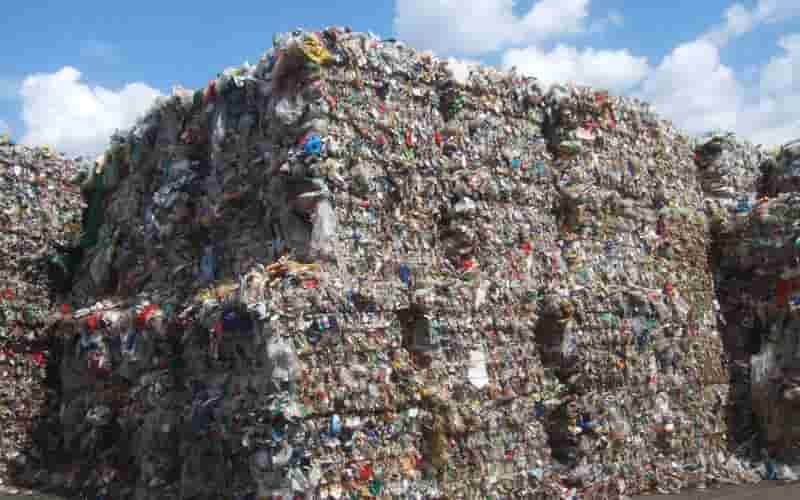
Automotive-fabric – EU-chemicals
